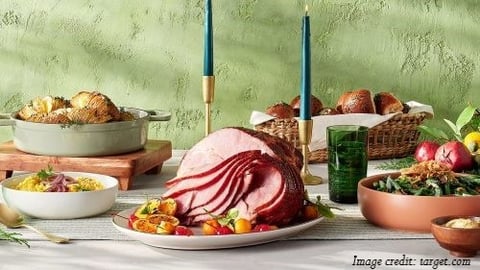Inflation Steady But Shoppers Still Cautious
Inflation held more or less steady in November, according to the latest Consumer Price Index (CPI) data from the U.S. Bureau of Labor Statistics (BLS). Overall inflation was up a scant 0.1% for the month, and food at home ticked up at the same rate following a 0.3% hike in October.
The CPI in the grocery sector has come in at or under 0.3% for the last several months. On a 12-month basis, food-at-home inflation rose 1.7%, coming in cooler than the 5.3% rate for food away from home.
BLS reported that four of the six major grocery store food group indexes edged higher in November, a month when shoppers flocked to stores for the Thanksgiving holiday. The CPI for cereals and bakery products and for nonalcoholic beverages both increased 0.5% for the month, while fruit and vegetable prices rose 0.3% and dairy and related products went up a negligible 0.1% during that time frame.
In the protein arena, indexes for pork, chicken and beef all declined in November, as the general meats, poultry, fish and eggs index fell 0.2%. The category of “other” food at home also dipped by 0.1% during the month.
Retailers that sell clothing likewise delivered some relief to inflation-wary shoppers last month, as the CPI for apparel decreased 1.3%. Some of the biggest declines came in the fuel sector, as gas prices went down 6% in November and are 8.9% lower on a year-over-year (YoY) basis.
Meanwhile, consumers are still paying more for foods consumed away from home, as that index remained on an upward trajectory with a 0.4% bump in prices last month. The CPI for full-service meals rose 0.5% in November.
President Joe Biden weighed in on the latest government inflation figures in the midst of the busy holiday shopping season and ahead of the 2024 election year. “Prices have declined for a number of products over the last year from cars and gallons of gas to TVs, toys, and many appliances to eggs and milk,” he said, also acknowledging that many Americans are still struggling with higher prices. “And now that our actions have helped rebuild supply chains and brought down input costs, I’m calling on large corporations to pass along the savings to consumers.”
While shoppers aren’t seeing the same level of sticker shock that they did in 2021 and 2022, they remain price conscious. “The November CPI demonstrates that the inflation rate for food-at-home continues to head in the right direction for American consumers, dropping to 1.7% on a year-over-year basis. But even as inflation gets back on par with historical averages, consumers must remain flexible and tactical with their purchasing decisions to get the greatest value as we head into the holiday season,” said Andy Harig, VP, tax, trade, sustainability and policy development at FMI - The Food Industry Association.
[Read more: “12 Retail Trends A-Trending”]
Matthew Shay, president and CEO of the National Retail Federation (NRF), also noted this week that consumers are balancing caution and optimism. “November Retail Monitor data shows that consumers are embracing the holiday season and promotions being offered by retailers,” he remarked. “Value conscious shoppers are out looking for deals as they purchase gifts for family and friends, and this data indicates that they’re finding them. Since November makes up half the holiday season, these numbers are a positive indication of what we can expect for the full holiday season.”
According to NRF’s data, sales at grocery and beverage stores rose 0.84% last month and are 3.19% up on a YoY basis.











